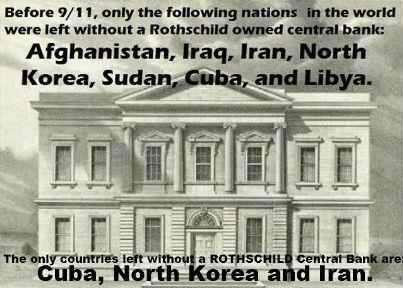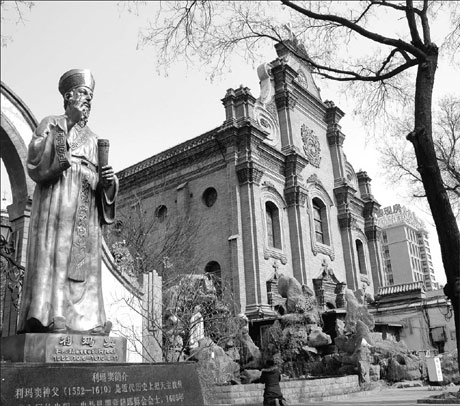

How Rome Went to China
By the later sixteenth century, the horizons of Rome's intellectuals had widened enormously. They now included not only Rome, Greece, and Egypt but a Far Eastern culture that westerners had hardly known since the days of Marco Polo, long before -- China.
From the 1540s, Jesuit missionaries in East Asia tried to convert the Chinese and Japanese to Christianity, as part of the Counter-Reformation drive to win the world back to Rome. The Japanese mission failed quickly, but the Chinese one seemed immensely promising. Jesuits like Matteo Ricci learned Chinese, mastered the canon of classic Confucian texts, dressed as mandarins, and joined the imperial court. They showed the Chinese intellectuals that the west had superior skills in some areas that the Chinese recognized as vital, like cartography and astronomy, and they translated accounts of western ideas and Christian doctrine into Chinese for their converts. For a time their mission prospered.
Meanwhile the Vatican, which controlled and managed the missionary enterprise, became a great repository both of the works the Jesuits produced in Eastern languages and of texts and works of art that they sent back. By the middle of the seventeenth century, the famous Roman Jesuit Athanasius Kircher could try to study Chinese in Rome. He insisted that the Chinese tradition was as old and profound as that of the Egyptians (indeed, he saw Chinese ideograms and Egyptian hieroglyphs as deriving from the same roots). Some argued that Chinese culture was actually more moral and pious than European.
Like earlier humanist efforts to find pagan sages who could teach Christians basic truths, the Jesuits' Chinese enterprise, too, eventually failed. But the Vatican's holdings wonderfully exemplify the fragile, fascinating bridge of texts and images which the Jesuits built in order to reach, understand--and convert--the most foreign of cultures.
- Giulio Aleni, Wan-kuo ch`uan-t`u (Complete map of all nations)
 China, ca. 1620
China, ca. 1620
Matteo Ricci, the first Jesuit missionary to become adept in Chinese, produced a map of the world, on Western principles, in Chinese. The Ricci map went through several versions from 1574 to 1603 and profoundly influenced western cartography. Although East Asia--and China in particular--is represented clearly and with scientific precision, nevertheless several of China's own cartographers, writing independently of the court, criticized the configuration as an insult to China's centrality. Sometime in the 1620s Giulio Aleni had this abridgment of Ricci's map printed and hand-tinted. Aleni's name is in the left-most column of Chinese on the upper half, above the Jesuit seal.
Barb. or. 151, fasc. 1a china01 HG.03
- Giulio Aleni, K`un-yu t`u-shuo
 China, ca. 1620
China, ca. 1620
Giulio Aleni, the equally skilled and effective successor to Matteo Ricci in China, supervised this wood-block printing of a book on the wonders of the western world, titled literally "An Illustrated Explanation of Geography." Here we see the Colossus of Rhodes, guarding that Mediterranean harbor, an image quite familiar to westerners from both classic and popular archaeology. The Chinese book shown here does not represent the best of Chinese wood-block engraving but appears to be a cheap printing (there is no publishing information given). It was probably sponsored by one of the churches that Aleni fostered in Fukien, where low-cost and quick printing abounded.
Borg. cin. 350, fasc. 30 fols. 75-76 china02 HG.09
- Michael Boym, Maps of Great Cathay
 Europe, 1652
Europe, 1652
The Jesuit Michael Boym based his album of eight maps of China on his own experience of the country and on Chinese gazetteers. The opening page of his impressive album features the entire East Asian subcontinent. Although it does not depict the Korean- Japanese configuration with scientific accuracy, it does give details of China's river and mountain systems. According to a Vatican colophon, the work was purchased in 1729 by someone named Riamonteger and was later deposited in the Borgia collection.
Borg. cin. 531 general map HG.11
- Letter of appreciation to the Church
 In Japanese, with Latin translation, 1621
In Japanese, with Latin translation, 1621
This letter was written in 1621 by Japanese officials who identify themselves as being from Gokinai, a word that referred to five imperially controlled districts around the capital at Edo, near Tokyo. Such officially attached lands were traditional bureaucratic institutions, not natural market or temple towns. Thus the signers would have been speaking as functionaries, not as residents of a town. They offer praise to the Catholic religion. A Latin translation is given on the same sheet.
Barb. or. 152, fasc. 3 china04
- Adam Schall von Bell, Eight-part cosmological map

Adam Schall was the first European ever to have been a member of the court bureaucracy in Peking. As part of his duties as head of the Office of Astronomy, he produced this large and truly spectacular six-part cosmological map, accompanied by pictures of astronomical instruments.
NOTE:This is only one part of the map. For the complete view you can go the the Map Room.
Barb. or. 149 china05 HG.07
- Abraham Ortelius, Asiae Orbis partium maximae nova descriptio


Venice: Donatus Bertelli, 1567
Abraham Ortelius's "New Map of Asia," of which a detail is shown here, was printed in 1567 on two flat sheets and shows the state of European knowledge of Asia before the Jesuit mission. Ortelius included traditional terms and images drawn from Marco Polo and other old sources, Tartar and Scythian place-names, renditions of the desert tents of Mongolian Great Khans, and the locations of Inner Asian states, such as Tibet and Tangut, that fought the Mongols in the thirteenth and fourteenth centuries. Much of north Asia is left blank, and there is no Korea. Two names are used at once for China: "Cataio" (central and central- western China) and "China" (the south). Quinsai and Zaiton, richly described by Polo, are displaced to the north. Ortelius places a pair of lions in the Chinese heartland, but his map lacks the corresponding lavish flora and fauna evident in Michael Boym's later work.
 Hu Jintao
Hu Jintao
China has been warning America that its support for the dollar was not unconditional. But the warnings fell on deaf ears and Washington embraced a borrow-and-spend policy that would have destroyed any other currency.
Then last year, when it became clear that America could not borrow enough money to pay its bills—Ben Shalom Bernanke revved up the Fed’s printing presses and pumped out an easy $900 billion—75 percent of America’s borrowing needs—to cover the debt.
Bernanke called his scheme, QE II, (Quantitative Easing II), which sounds more like a laxative than an economic policy.
While America’s economy (and the dollar) is headed for the trash heap, China’s goal is toreplace the dollar with the Yuan as the new global currency.
Thus, countries will be forced to maintain reserves of the Yuan and dump the dollar.

CHINA WOULD THEN use its own currency to conduct transactions, gaining more favorable terms—(which America now enjoys but not for long) Look at what has happened in Canada, a Yuan Hub Setup in Toronto for their currency,a first in the world!—in the Asian superpower’s insatiable thirst for new energy sources.
As reports Der Spiegel, Hu and the Politburo attended secret lectures in which Chinese professors explained the history of the rise and fall of major powers. During these sessions, the Chinese leaders were taught that no modern country has ever become a superpower without a reserve currency.
The United States superseded the British Empire at the end of World War II, when the dollar replaced the British pound as the dominant currency in the global financial system.
No comments:
Post a Comment
Comments always welcome!